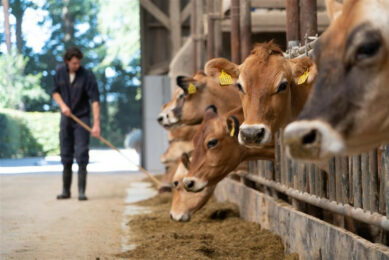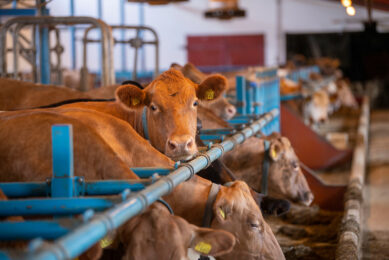France: A dairy farm with a passion for protein self-sufficiency
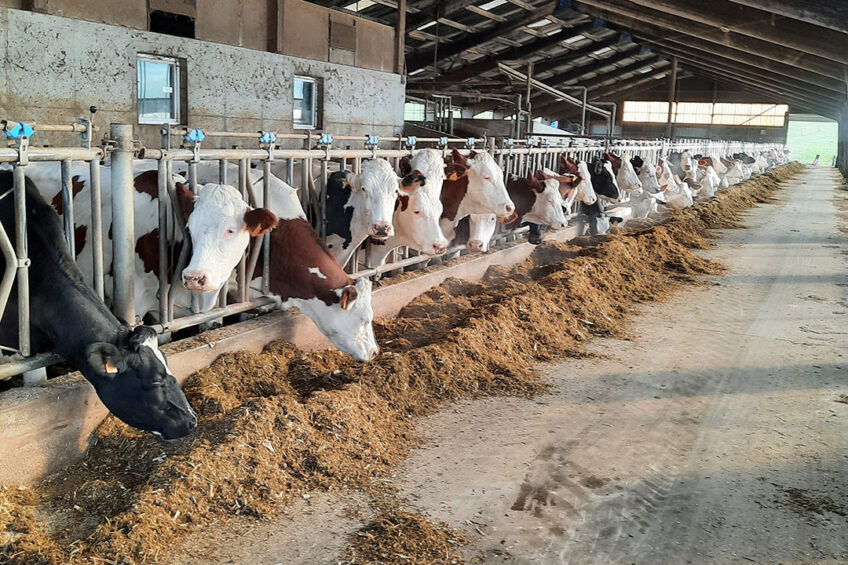
Managing a herd of more than 300 dairy cows, the farm has chosen to limit its dependence on soybean meal thanks to the better value of forages.
Located in the village of Oppenans in the Departement of Haute-Saône (Bourgogne-Franche-Comté region, east of France), the Gaec de Tournans belongs to a network of 330 pilot farms that form part of the Protein Plan launched by the French government in December 2020. The Protein Plan aims to ensure France’s protein self-sufficiency by 2030.
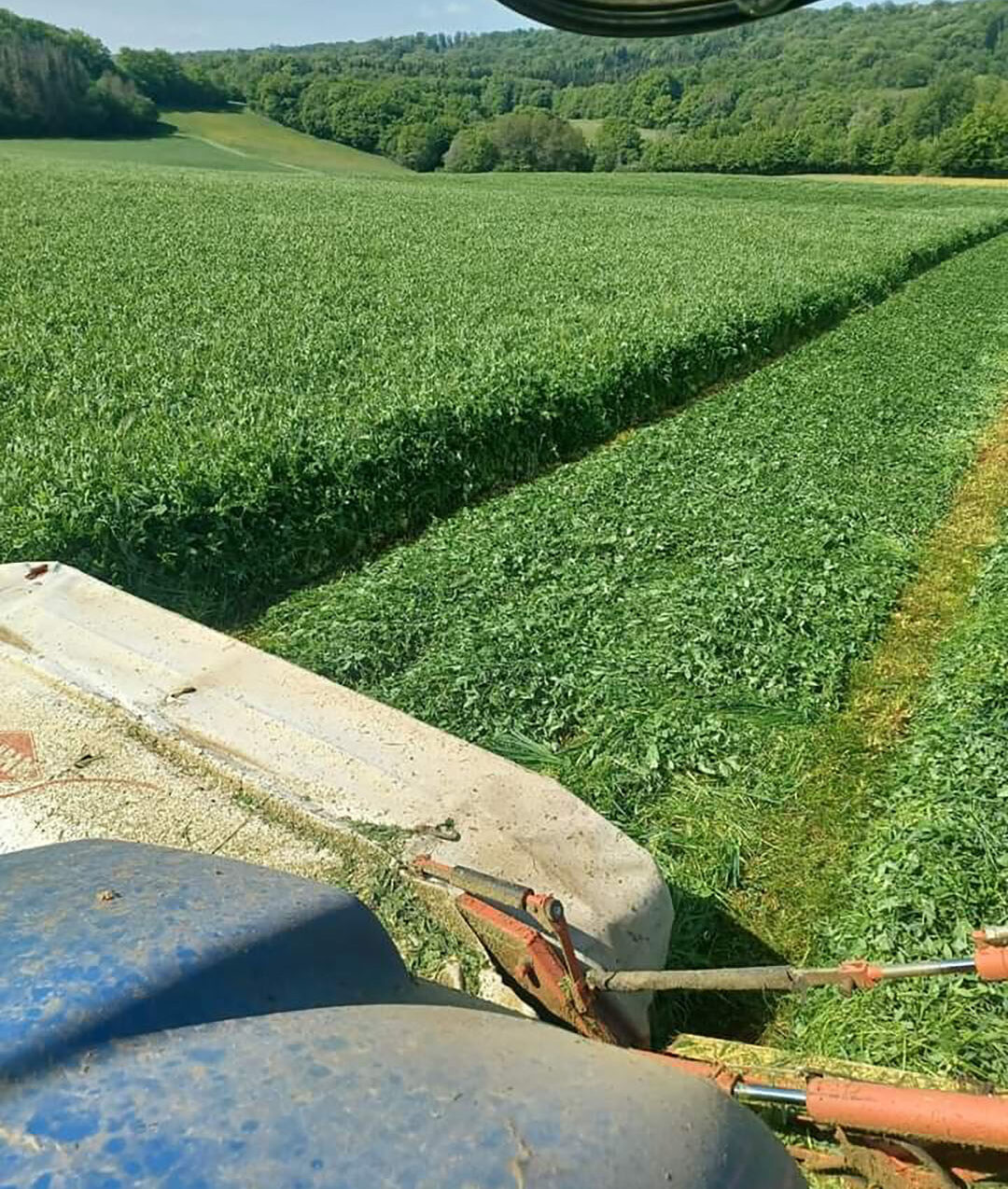
“Due to its structure and the volume produced, the GAEC de Tournans is one of the largest dairy farms in the region,” says Marie-Christine Pioche, business advisor at the Chamber of Agriculture of Haute-Saône.
Two main levers
“It took at least 7 years and several steps to increase our protein autonomy level,” explains Laurent Isabey, one of the associates of the farm in charge of the dairy herd. For him, the move to more protein autonomy has been motivated by a number of reasons.
“After closing a fiscal year at 20% of EBITDA/PB (gross operating surplus/gross product), we observed that we had increased our product but that EBITDA had fallen. We were moving more money, but with nothing left at the end. The research of autonomy was the lever to get out of this spiral,” he explains.
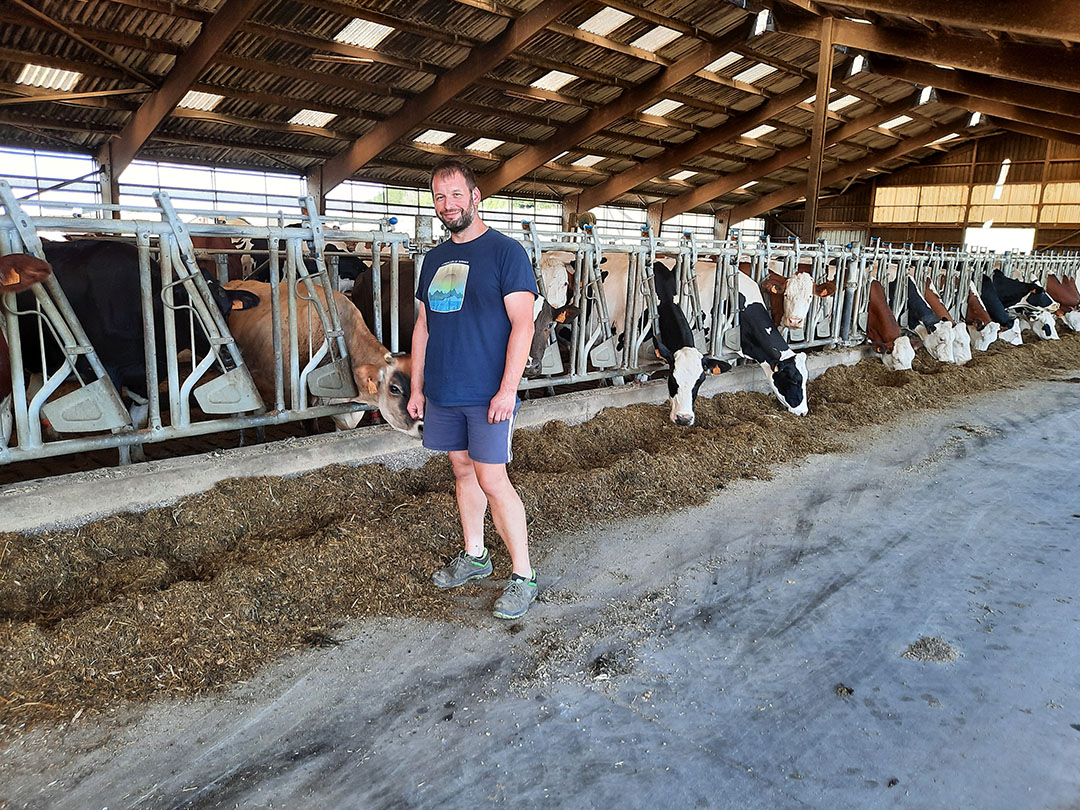
On the other hand, after 12 years of simplified sowing, the Gaec de Tournans faced soil structure problems. To solve this, the partners turned to direct seeding under permanent cover of alfalfa and trefoil in 2014, which correlated well with their overall autonomy strategy. They decided also at this time to manage the breeding of their replacement heifers that they subcontracted and to stop the production of silage maize. A new step was taken in 2017 with the introduction of corn cobs silage in the ration and then meslin silage*.
“We have optimised the interactions between crops and livestock,” summarises Isabey, with a very different situation in 2020 compared to 2015 (see table below), and we are more confident about the impact of the summer drought on fodder crops.”
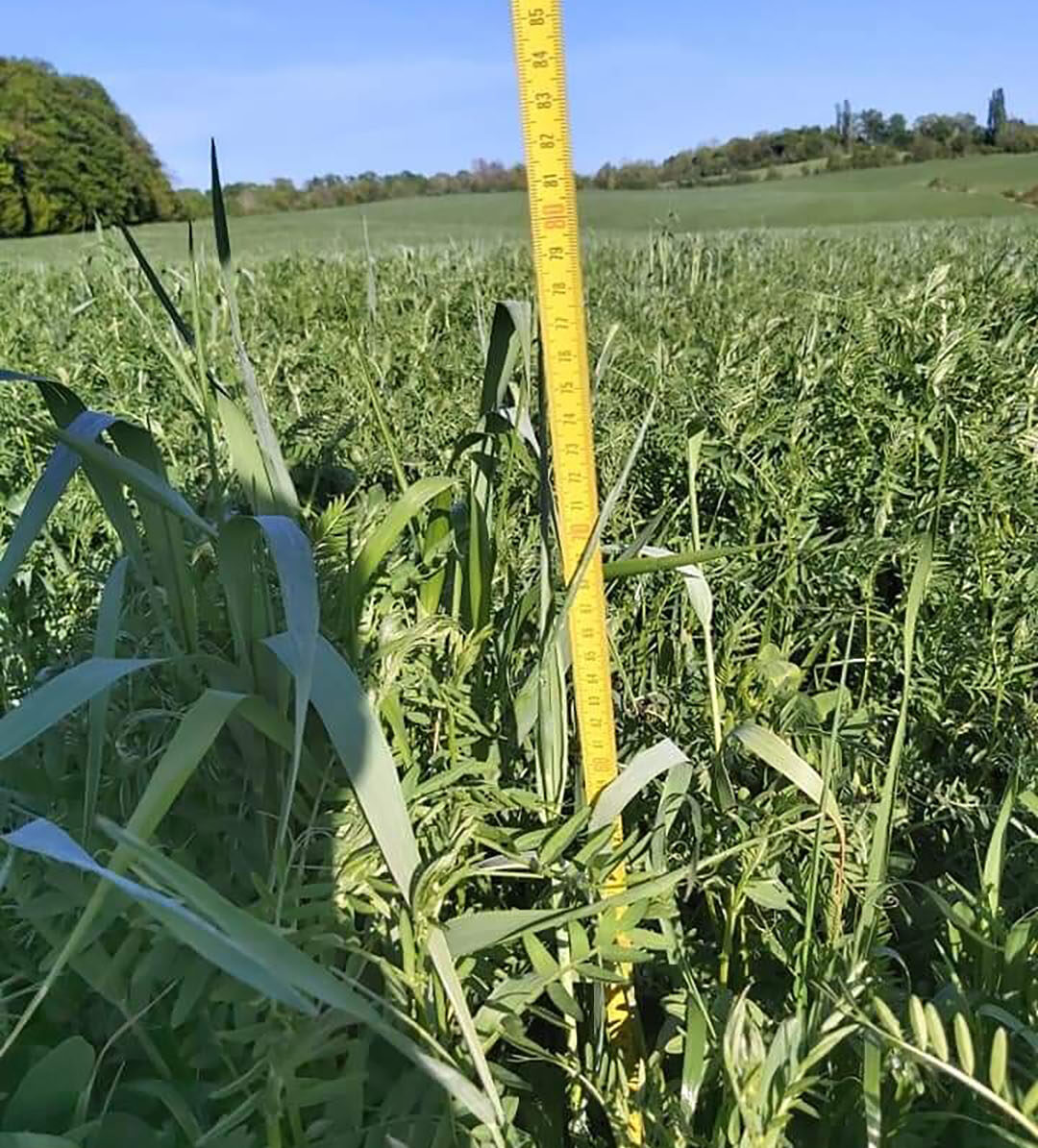
“Two main levers have been implemented within the Gaec for more protein self-sufficiency,” adds Isabey.
- Alfalfa planted with rapeseed: Alfalfa is sown in association with rapeseed (1 kg of rapeseed for 25 kg of alfalfa/ha). In the first year, a cut of alfalfa is harvested after the harvest of rapeseed. Then it is maintained for 3 years. The average yield is 10 tonnes of DM per hectare in 4 cuts. The 2nd cut is generally harvested as hay, and the other 3 as silage mixed with temporary or wrapped grasslands. This fodder has a total nitrogen content level of 17%.
- Meslin to make fodder stocks: The Gaec implants proteinaceous cereal mixtures such as oats (30 kg/ha), clover (10 kg/ha), forage peas (40 kg/ha), and vetch (25 kg/ha). The seeds are produced on the farm.
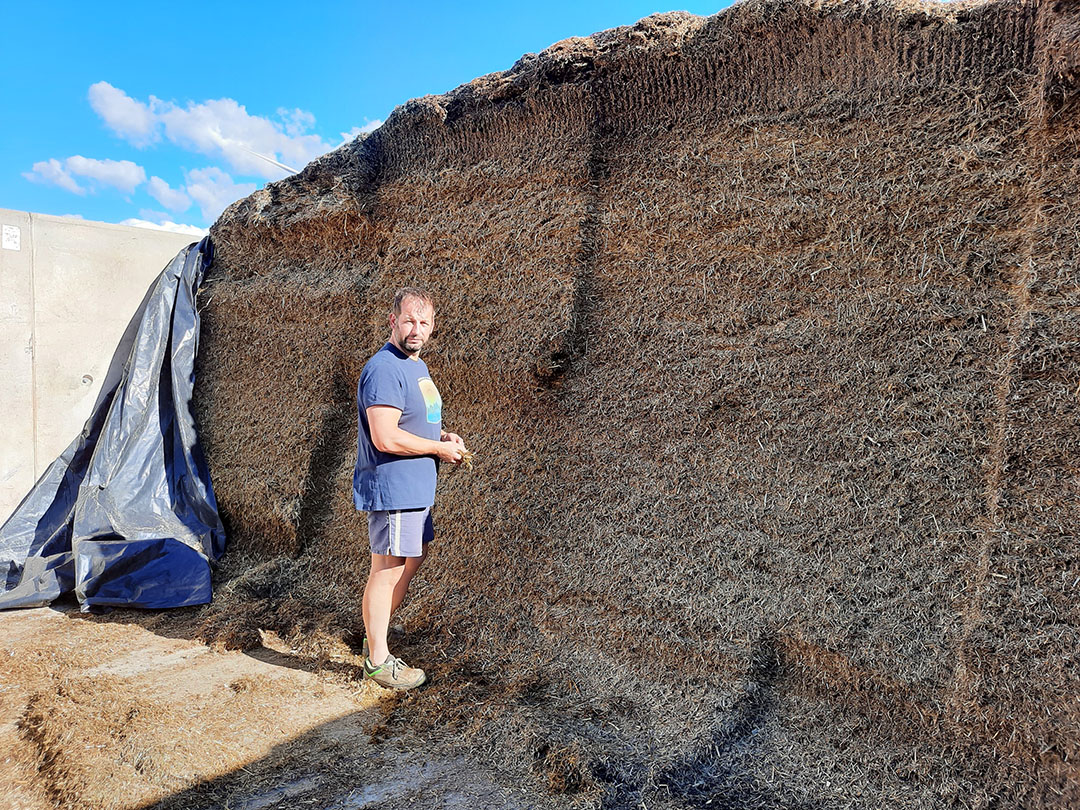
The meslin is planted early, around mid-September, to obtain good development in the spring and to be able to harvest early without jeopardising the planting of the following maize. The tonnage harvested after 1 day of drying is, on average, 6 tonnes of silage DM per hectare. A preservative is systematically added to the constitution of the silo.
Positive impacts
All the farm management changes led to numerous positive impacts.
· Economics: When calculating the cost of milk production, we see a drop in input costs for crops and purchased feed of €47/1,000 l, plus an improvement of the farm’s economic efficiency by 10%.
· Work: Forage harvests are more spread out over time, and the number of interventions in cultivated areas is reduced.
· Environment: The direct seeding technique and the reduction of inputs on the surfaces and the herd are favourable with a reduction of greenhouse gas emissions.
· Autonomy: External purchases of feed for dairy cows fell from 592 tonnes in 2015 to 272 tonnes in 2020. The costs of fertilisers and phytosanitary products have fallen by more than 50%.
*Meslin is a mixture of cereals (triticale, rye, spelt, wheat, barley, oats), protein crops (forage peas, protein peas, horse beans, etc.) and possibly a legume (vetch, etc.).
Join 13,000+ subscribers
Subscribe to our newsletter to stay updated about all the need-to-know content in the dairy sector, two times a week.




